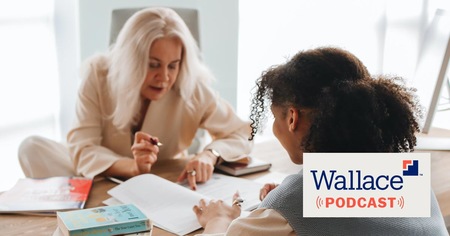The third brief in AIR's series Beyond the Bell: Research to Action in the Afterschool and Expanded Learning Field was recently published. Linking Schools and Afterschool Through Social and Emotional Learning addresses the policy context reflecting a growing interest in SEL, reviews the differences between how afterschool and in-school educators implement SEL practices, and suggests ways that these two groups can work together in support of their students' social and emotional development.
Implementing SEL in School and Afterschool Settings
Both in-school and afterschool educators utilize a variety of approaches with regard to SEL. In-school educators often use specific evidence-based SEL programs to teach their students. Conversely, afterschool programs are not as likely to use an evidence-based SEL curriculum. One exploratory study found that afterschool providers create a climate of support, rather than using a set curriculum to teach emotional and social life skills.
While it is easy to determine the different approaches used by these two groups, the advantage of one approach over the other is less evident. AIR's researchers concluded that students are best served when afterschool educators align their strategic support strategies with SEL school-based curriculum.
Working Together to Promote SEL
To support SEL implementation, AIR researchers recommend afterschool programs take these steps:
1. Consider the Policy Context
Afterschool educators are encouraged to support the Elementary and Secondary Education Act (ESSA) by helping schools run activities that fall within the ESSA category of "well-rounded" educational activities or activities that support "safe and healthy students."
2. Create Conditions for SEL
By learning how program quality and school climate contribute to SEL, partnering with local schools and providing support for professional development in SEL practices, afterschool educators can help create an optimum SEL environment.
3. Define Your Approaches and Practices
When afterschool educators understand different SEL approaches, know how to support SEL and could suggest ways to best work with their in-school partners, SEL programs are more effective.
A Planning Tool
To help afterschool and in-school educators pursue their common SEL goals, AIR has created a three-part planning tool. Part I applies to afterschool program coordinators. Part II applies to school principals or other relevant school personnel. Part III initiates a discussion between these two sets of educators. Click here to access this valuable tool.
By aligning their efforts, in-school and afterschool educators could best serve the needs of their collective student body.
Written by Lisa Stickler, staff writer for AfterSchool Today magazine.




